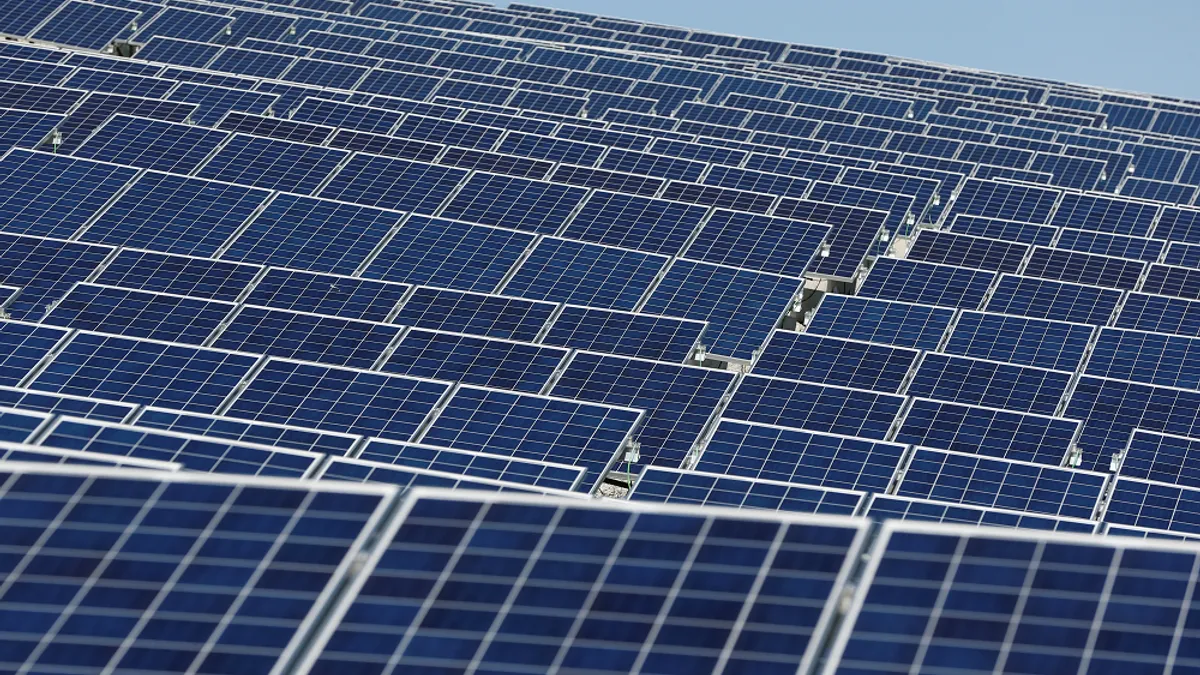Dive Brief:
- Despite a dip in U.S. solar installations in the second quarter, new analysis from Wood Mackenzie and the Solar Energy Industries Association predicts 17% growth for 2019, with 12.6 GW total of new solar capacity expected to come online.
- Quarterly residential solar installations rebounded from a first quarter dip to reach 628 MW in Q2, growing 3% quarter-over-quarter and 8% on the year. Non-residential installations slipped to just 426 MW in the second quarter — their weakest level since Q3 2016, due to interconnection delays.
- But improved economics and corporate buyers indicate a strong future for utility-scale solar. Second quarter installations for utility PV decreased to 1,023 MW, but a spate of project announcements has grown the total contracted pipeline for utility-scale solar projects to a "historic high" of 37.9 GW.
Dive Insight:
Overall, second quarter solar installations represented a 7% decline year-over-year, largely due to "policy transitions and persistent interconnection issues in key commercial markets," according to the report. But the outlook remains strong due to utility-scale projects and growing interest in corporate green energy.
Solar made up 36% of new U.S. capacity additions in the first half of 2019, the highest level in three years, according to the report.
Off-site corporate solar procurement represents 17% of the new utility-scale solar capacity announced in 2019, according to the report.
"As more companies commit to 100% renewable power, corporate offsite procurement is expected to drive more than 20% of new utility-scale capacity additions from 2019 through 2024," Wood Mackenzie senior solar analyst Colin Smith said in a statement.
The report also concluded that 55% of utility-scale projects announced so far this year were the result of the declining cost of solar resources. Utility-scale solar prices are at their lowest point ever, and SEIA says recent power purchase agreements have been signed for between $18/MWh and $35/MWh.
"Cities, states and utilities are already following through on their renewable energy and zero carbon commitments," Smith said. "We’re starting to see procurement occur and expect even more RPS-driven procurement in the near- to mid-term."
The 2019 forecast for utility-scale solar additions has decreased to 8.1 GW, according to the report, "due to a handful of large projects that have pushed out target commercial operation dates to 2020." Looking ahead, however, forecasts for 2020 and 2021 have been increased by 2.5 GW and 1 GW, respectively.
The U.S. utility solar forecast for 2019-2024 has grown by 6.7 GW since last quarter, "thanks to unprecedented levels of procurement," the report says. "New project announcements are exceeding projects completed as developers and utilities are working to safe-harbor as much capacity as possible before the [investment tax credit] steps down."
In the non-residential sector, which includes commercial and industrial, the report finds "major policy reforms continued to hamper development" in California, Massachusetts and Minnesota. Looking ahead, however, the market is expected to grow from 2020 to 2022, before declining in 2023 in response to declining tax credits.















